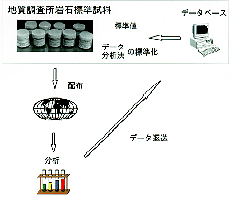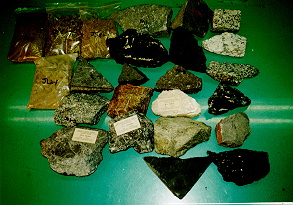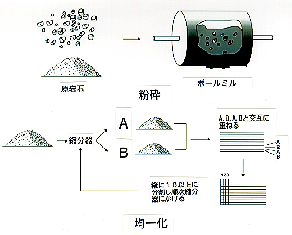 __
__

The Geological Survey of Japan (GSJ) has issued 31 rock reference samples for the analysis of major, minor and trace elements, isotopic compositions and isotopic ages. The purpose of this standard reference material project in Geological Survey of Japan is to improve and check the reliability of analytical data obtained from different methods and different laboratories. Therefore, these samples (total number is over 8000) have been distributed to analytical laboratories in 43 countries worldwide and the analytical data obtained with cooperative works were compiled and used to improve the accuracy of the data (Fig. 1).
1.Samples
Fist two samples of JG-1 and JB-1 is prepared in 1967 and 1968. After
that, 15 samples JA-1 to JF2 "igneous rock series" were formed from 1981
to 1986. Nine samples JLk-1 to JCh-1 were prepared from 1986 to 1989. Five
samples JR-3 to JMn-1 is prepared from 1991 to 1995. Replacement of depleted
JG-1 and JB-1 were made from same original rocks in 1984 which is named
as JG-1a and JB-1a.
Fig.1 Scheme of reference samples___ Fig.2 GSJ Reference samples
 __
__

2.Sample preparation
Original rocks shown in Fig. 3 are crushed by hammer and jaw crusher then
powdered in a ball mill. The powder is mixed well and bottled in each 100g
as shown in Fig. 4. The homogeneity of each sample is checked.
Fig.3 Original rocks_________________________Fig.4 Sample preparation
 __
__

3.Data compilation
The sample is distributed to analytical laboratories worldwide and obtained
analytical data are compiled and recommended and preferable values are
determined periodically in Journal.
The latest data and related information is accessible anytime in Internet
home page.